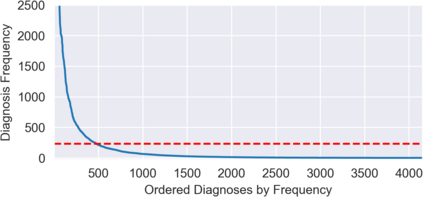Recent work on predicting patient outcomes in the Intensive Care Unit (ICU) has focused heavily on the physiological time series data, largely ignoring sparse data such as diagnoses and medications. When they are included, they are usually concatenated in the late stages of a model, which may struggle to learn from rarer disease patterns. Instead, we propose a strategy to exploit diagnoses as relational information by connecting similar patients in a graph. To this end, we propose LSTM-GNN for patient outcome prediction tasks: a hybrid model combining Long Short-Term Memory networks (LSTMs) for extracting temporal features and Graph Neural Networks (GNNs) for extracting the patient neighbourhood information. We demonstrate that LSTM-GNNs outperform the LSTM-only baseline on length of stay prediction tasks on the eICU database. More generally, our results indicate that exploiting information from neighbouring patient cases using graph neural networks is a promising research direction, yielding tangible returns in supervised learning performance on Electronic Health Records.
翻译:最近关于预测重症护理股病人结果的工作主要集中于生理时间序列数据,基本上忽略了诸如诊断和药物等稀少的数据。当它们被包括在内时,它们通常在模型的后期阶段被集中起来,这可能会难以从罕见的疾病模式中学习。相反,我们提出了一个战略,通过在图表中将类似病人联系起来,将诊断作为关系信息加以利用。为此目的,我们提议将LSTM-GNN用于病人结果预测任务:一个混合模型,将长期短期内存网络(LSTMs)结合在一起,用于提取时间特征和图形神经网络(GNNs)以提取病人邻里信息。我们证明LSTM-GNNs在电子疾病数据库中超过了只使用LSTM的停留预测任务长度基线。更一般地说,我们的结果表明,利用相邻病人病例使用图形神经网络的信息是一个有希望的研究方向,在电子健康记录上监督的学习表现中产生实际回报。





